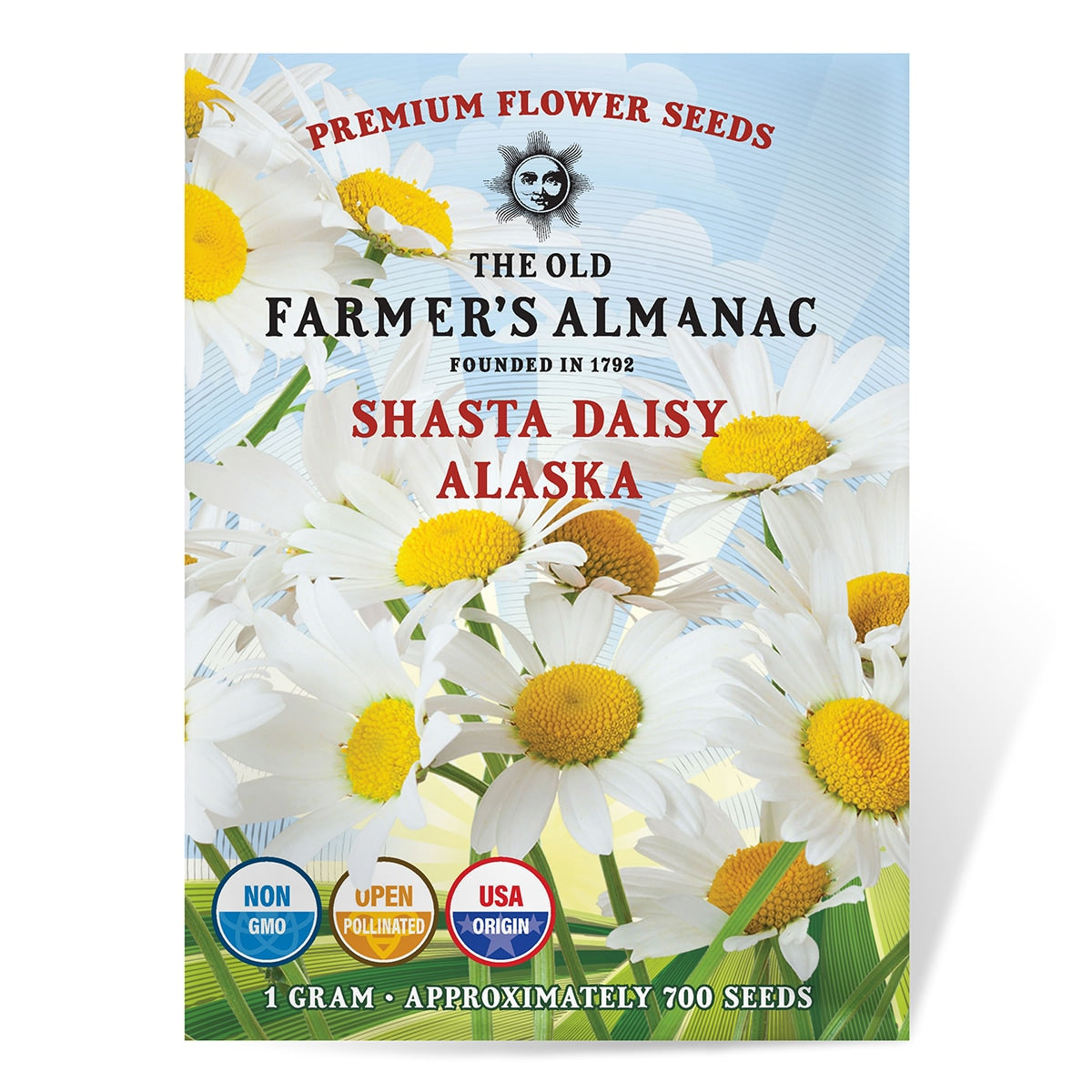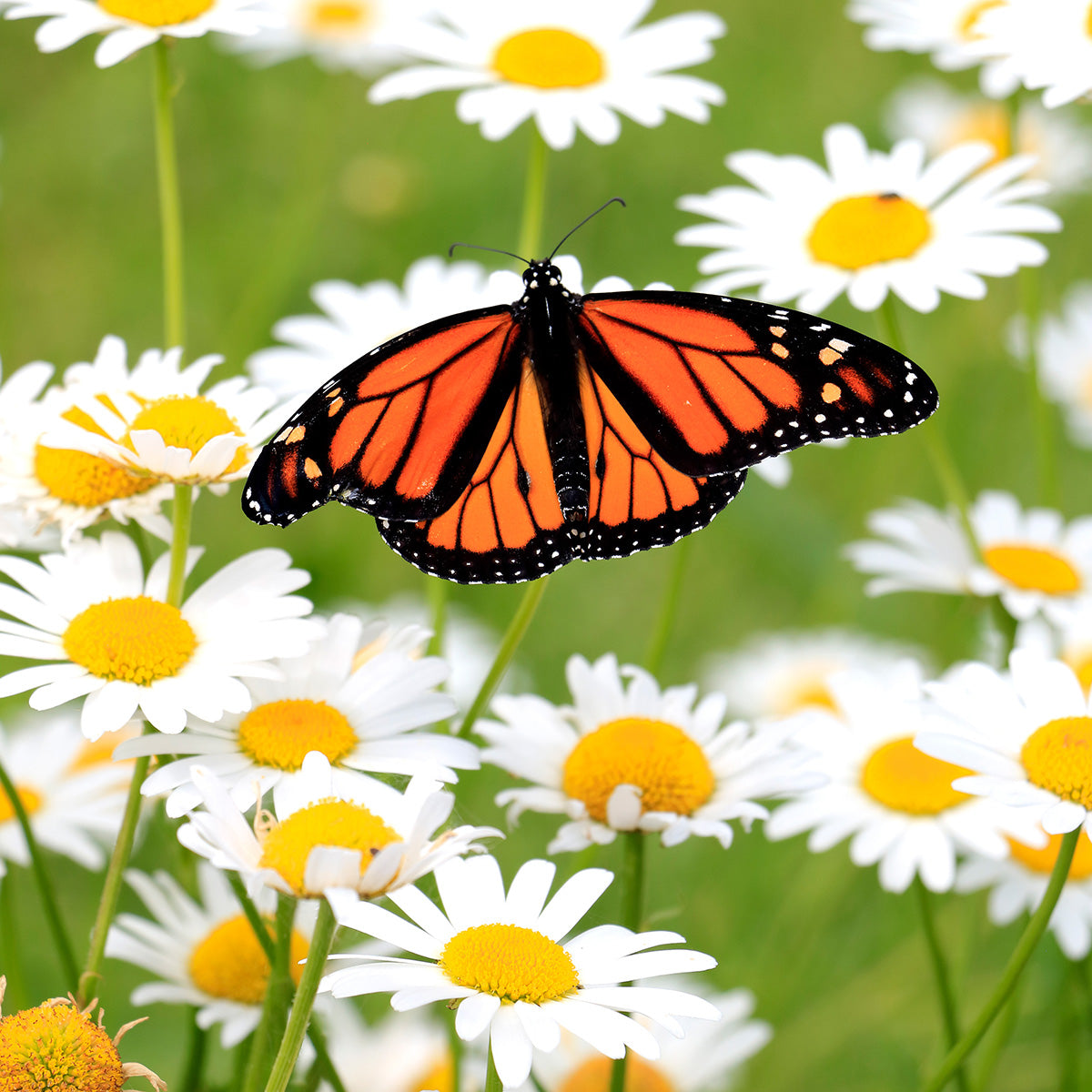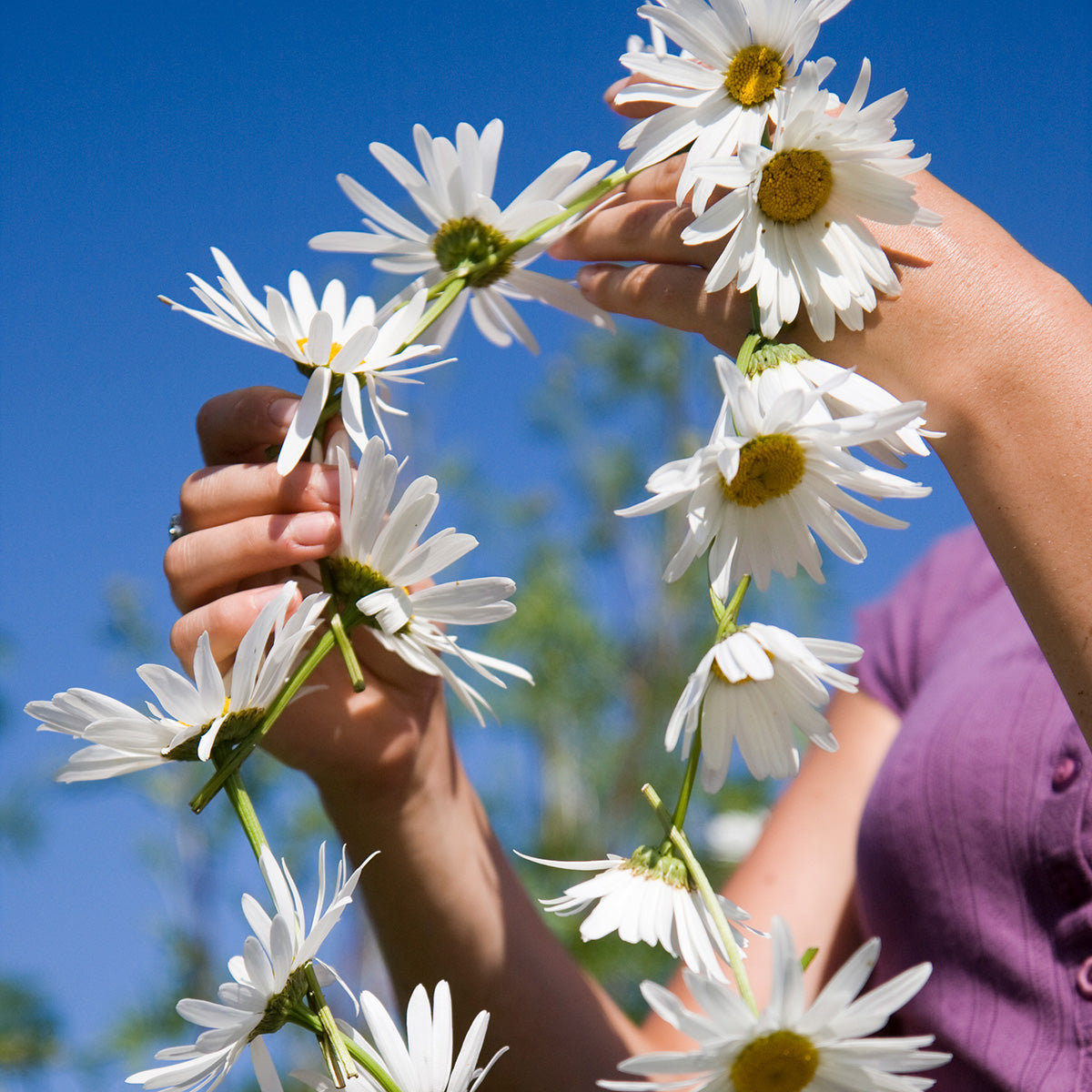Asterales
The Old Farmer's Almanac Shasta Alaska Daisy Seeds
The Old Farmer's Almanac Shasta Alaska Daisy Seeds
Couldn't load pickup availability








Collapsible content
DESCRIPTION
Freshly Packed: These seeds are packed for the current growing season and will provide high germination rates next year as well.
Premium Packaging: All seeds from The Old Farmer’s Almanac are packaged in individually styled packets ideal for gifts, storage or immediate use. Each packet displays the flower, vegetable, plant or herb variety on the front with instructions and plant facts on the back.
GROWING TIPS
Sow Alaska Shasta Daisy seeds in open ground with full sun. Plant in average, medium-dry, well-drained soil after the final spring frost. Thin to the best starts when plants are 3" tall. Alaska Shasta Daisies mature into bushy uprights, 18-24" tall; and bloom regularly starting in their second year. To encourage new flowers and improve plant health, cut back spent foliage, leaves, and faded blossoms. In areas with severe winters, cover with straw to protect resting plants.
Exceptional in arrangements! With deep green stems and large, 4" wide flowers Alaska Daises look fabulous in cut flower arrangements.
Free flowers! Divide clumps of daises every 3-4 years, and replant in new spots, to encourage more flowers to grow!
Wit & Wisdom: Daisies are one of the April birth flowers. They are also said to symbolize innocence and hope. Read The Old Farmer's Almanac Shasta Daisies Growing Guide!






